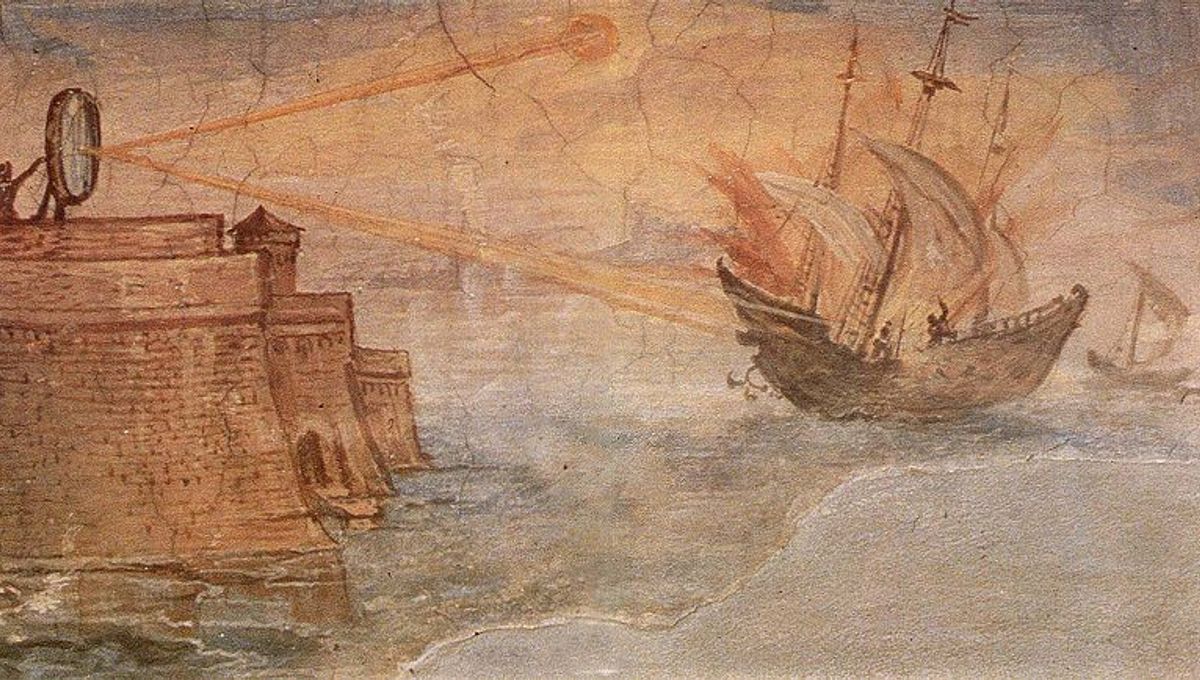
A grade eight student from Ontario, Canada has helped to settle a long-standing historical debate by proving that a so-called “death ray” designed by the Ancient Greek polymath Archimedes could really have worked. The weapon – which supposedly harnessed the sun’s rays in order to incinerate enemy ships – is reported to have been deployed against the Roman Navy with deadly consequences, yet researchers have yet to discern whether the ancient contraption really existed.
To help resolve the dispute, 12-year-old Brenden Sener built a scaled-down version of it, and ultimately concluded that the concept works and could plausibly have been used in battle.
The original death ray is said to have been used against the invading Romans during the Siege of Syracuse, which lasted from 213 to 212 BCE. As warships advanced on the Hellenistic city – which is located on the island of Sicily – local defenders turned to Archimedes’ inventions to help keep the enemy at bay.
Among the wonderful machines rumored to have been used is the famous Claw of Archimedes, which supposedly lifted Roman ships out of the water before dropping them from a great height. According to sources from the Greek historian Lucian, Archimedes also placed mirrors along the bay of Syracuse in order to focus the sun’s rays onto the enemy’s ships, causing them to burst into flames.
While some scholars – including the famous French philosopher René Descartes – have dismissed the whole idea as fiction, others have attempted to recreate the weapon with reasonable success. In 2005, for instance, a team from the Massachusetts Institute of Technology (MIT) found that Archimedes’ design could set a ship alight in just 11 minutes.
With no enemies to vaporize, Sener settled for a tabletop version of the ancient death ray, using a series of concave mirrors and LED desk lamps. He found that when using the reflectors to focus a 50-watt heat source onto a piece of cardboard, the temperature of the target could be raised by 2°C (3.6°F) with each additional mirror, up to a total of three mirrors.
Adding a fourth mirror then caused a massive temperature jump of 8°C (14.4°F).
When he repeated the experiment using a 100-watt lamp, he found that “the change in temperature with each mirror was 4°C [7.2°F] up to 3 mirrors and an additional 10°C [18°F] with the 4th mirror.”
“Based on my experimental findings, I agree with the MIT group and believe that with a strong enough heat source and larger, multiple mirrors all focused at a perfect angle, combustion could be possible,” writes the young study author.
Ultimately, he concludes that “the historical descriptions of the use of the Death Ray in ancient Syracuse is plausible, however no archeological evidence of the Archimedes Death Ray has been found besides what is recorded in the books of Ancient Philosophers.”
For his efforts, Sener has been awarded the Matthews Hall Annual Science Fair Gold Medal, the Physical Sciences Thames Valley Science and Engineering Fair Gold Medal, and the London Public Library Award for Inspiring Children’s Interests in Science and Technology.
Source Link: 12-Year-Old Builds Replica Of Archimedes’ Death Ray - And It Works